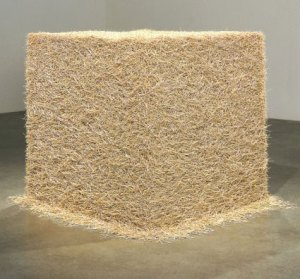In their magnificant article in E-flux magazine – entitled ‘Generic Objects’ – Gean Moreno and Ernesto Oroza set out to find the individuality of the generic, mass-produced object.

Their characterizations of the conditions and possibilities of these objects are striking, consider for instance the fact that ‘[t]heir most telling quality is that they have slipped below the threshold of what would otherwise mark their identity as designed artifacts’. Reflecting on one of their examples, the authors remark that ‘a bucket is a generic object only in the presence of another bucket (or, at the very least, in its implied presence). Generic objects draw on the dense fields of repeating specimens for their very definition. It is in the presence of other objects of their kind that they actualize their individual capabilities’. It is interesting to see how in these mantras of everyday mass products some philosophical consequences are brought to the fore; what, in fact, distinguishes this plastic cup from that one except for the usual idea of spatial localization? If it is the fact that they are put to a specific use or relate to this and that object in a different way; do they still ‘have’ a singularity? Again; ‘modern life is such that, confronted with the most mechanical, the most tereotypical repetitions, inside and outside ourselves, we endlessly extract from them little differences, variations and modifications. Conversely, secret, disguised and hidden repetitions, animated by the perpetual displacement of a difference, restore bare, mechanical and stereotypical repetitions, within and without us. In simulacra, repetitions already plays upon repetitions, and difference already plays upon differences. Repetitions repeat themselves, while the differenciatior differenciates itself’ (Deleuze, D&R). Was Deleuze the theorist of mass-consumption par excellence? Or did he foresee the reviving attention to the ‘object-ness’ of the work of art; the move away from signifiers and symbolism and towards the thing-power (both passive and active) of the material?
